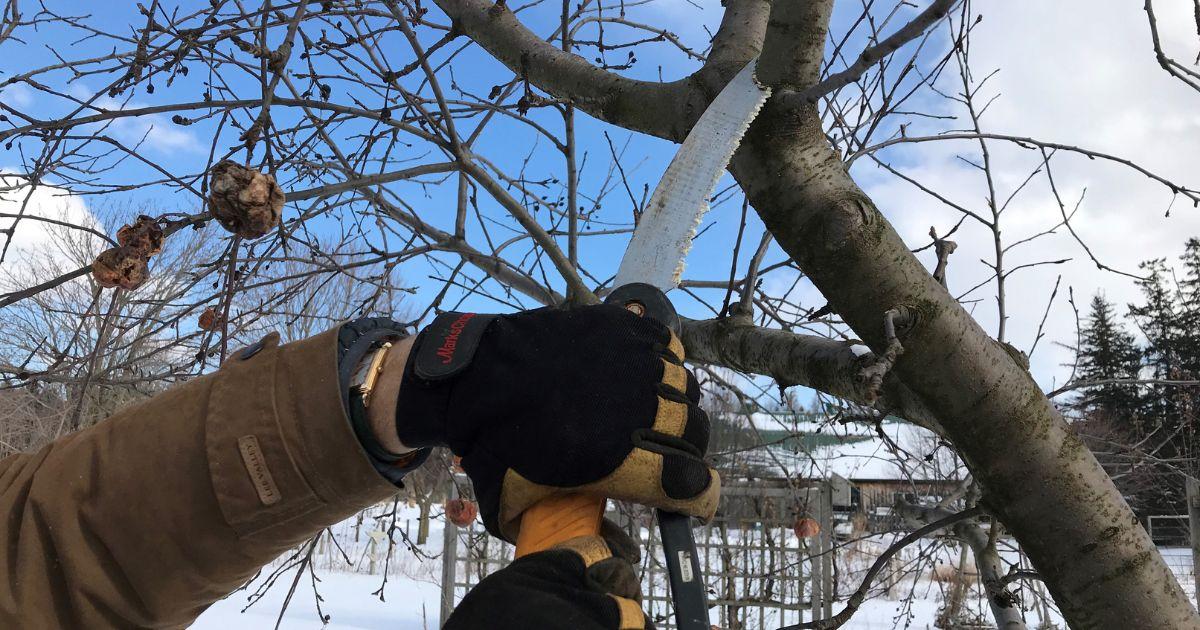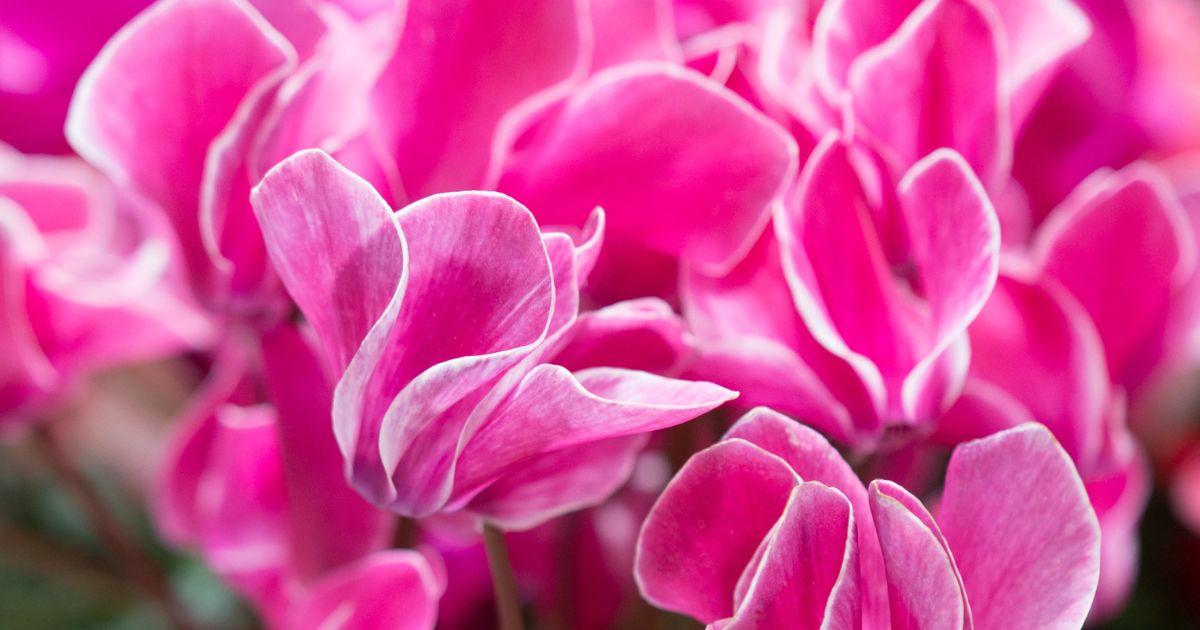Pruning is perfect for when favourable weather conditions and personal ambition intersect. For us, this occurs while holding our second cup of coffee and staring out the kitchen window at our gardens on a bright, sunny and crisp winter day.
What Tools You Need
Hand pruners. These are for light work. Use hand pruners for shaping existing tree branches and for reaching into young, woody growth to remove 1- to 3-year-old growth that has bent over and broken under the weight of the ice. Good-quality hand pruners run between $25 and $80.

Pruning saw. Forget the crosscut and the ripsaw in the basement; a pruning saw is designed for the unique purpose of cutting through green, living wood. It has teeth that are arranged alternately so that you get a “purchase” on the wood on the fore stroke and the backstroke, which means you use less energy when cutting branches and limbs. A hand-held pruning saw will cut wood up to about 10 cm (4 inches) in diameter, sometimes larger, depending on the wood. A soft wood like linden, for example, which grows up to 15 cm (6 inches) in diameter, can easily be pruned with a pruning saw.
The secret to a truly effective cut (and with the least amount of effort) is a sharp saw. If you have an old one, either sharpen it, replace the blade or buy a new one. A good pruning saw should not cost you more than $25. For some reason, the best saw blades are made in Sweden.

Lopper. Both anvil and bypass loppers can be effective at cutting green wood up to 8 cm (3 inches) in diameter. These generally require less effort and also work more quickly than a pruning saw (especially the ratcheting type), but if you cut a branch that is too big for the tool, the cutting blades will twist. The permanent damage can be frustrating to deal with. We often ask more of our tools than they were designed to deliver and have trashed more than one pair by being overly aggressive.

Pole pruner. A good-quality pole pruner can pay for itself many times over if you know how to use it and especially if having one on hand saves you from calling in a professional. There are a couple of caveats, however. First, the pruning saw on the end of your pole pruner has its limitations, as all tools do. Do not attempt to cut a tree limb that is more than, say, 10 cm (4 inches) in diameter.
Second, fatigue. Like painting a ceiling, your arms are just not designed to be held aloft for long periods of time. The leverage of a 7-metre pole pruner, extended to its max, can be awkward to say the least. We recommend that you practise on some lower limbs first, working your way up to the loftiest specimens.
Third, safety. You really do not want a tree limb to fall on your head. Wear a safety helmet or at least take
small sections off the limb at a time, starting with sections that are the greatest distance from the main trunk of the tree. Always wear safety glasses, as the sawdust often drifts down into your eyes. Do not stand on a ladder with the pole pruner extended. And work with a buddy who can assist you, guide you to branches that may not be visible to you from your vantage point, and who can laugh at you while you try your best to get it right. Cheap entertainment.

What You Should Cut
Remove any broken branches. Also, cut minor branches back to where they meet a major branch or the main trunk of the tree. Make a cut about one-third through the bottom of the branch first and then cut it through from the top. This way, you will avoid stripping bark off the trunk of your tree under the weight of a falling branch.
Branches that have splintered under the weight of the ice will also have to be removed. Evergreen branches that are bent down but not broken can be staked into an upright position come spring. This is most common for upright junipers and cedars. For now, just leave them alone. As the sap rises in spring, many will find their way into a natural, upright position. Birch is another tree that will stand more upright as the sap rises.
How to Prune for Shape
After repair of damaged wood is considered, you should “prune for shape.” Think about the ultimate look that you are trying to achieve with each permanent plant in your yard. This is an opportunity for you to get it right in the long run. With that in mind, stand back from each specimen and study it with an eye to achieving the look you want.
It is very handy to have some hair-cutting experience, but even if you do not, chances are you have had a few haircuts in your time. Ask yourself, “What is the hairdresser/ barber thinking when they approach the task of cutting my hair?” The answer can be quite informative where pruning is concerned.
Prune Many Plants (But Not All)
Winter is the best time of year to prune apple trees. Orchardists know this, which is why, when the sun is shining, but the trees are still sleeping in dormancy, they get out their pruning equipment from late January to early spring. All other fruiting trees lend themselves to winter pruning except for pears, which do not generally need pruning beyond for shape.
Prune apricots, nectarines and peaches in early spring before the buds break. Prune them hard, up to half of last year’s growth to maximize fruit-bearing potential. Evergreens, including cedar hedges, can be pruned in winter. Late winter and early spring, as the snow is melting, is the perfect time of year to prune white flowering hydrangea, roses and ornamental grasses that have been left standing. Maple trees are “bleeders” and should only be pruned when in full leaf.
We cannot emphasize the importance of caution enough when pruning: Do not overextend yourself or the capabilities of your tools.
If you harbour doubt regarding your ability to prune damaged trees and shrubs, either seek help from someone more experienced or call in an arborist for a consultation. A certified arborist has extensive education and training; they learn how to maximize the life of a tree, despite the damage that may have occurred to it. There is a lot of value in what they do.
A word of optimism: Remember that ice storms and heavy snow are a product of nature. She brings severe weather on us Canadians from time to time, climate change notwithstanding, and the natural defences built
into every tree and shrub prove the remarkable healing powers of nature. Sometimes we just need to be patient.
Mark Cullen is an expert gardener, author, broadcaster and tree advocate
and holds the Order of Canada. His son, Ben, is a fourth-generation
urban gardener and a graduate of the University of Guelph and Dalhousie
University in Halifax. Follow them at markcullen.com, @MarkCullen4
(Twitter) and @markcullengardening (Facebook) and look for their latest book, Escape to Reality.
Follow them at markcullen.com, @MarkCullen4, facebook.com/markcullengardening and biweekly on Global TV’s national morning show, The Morning Show.














